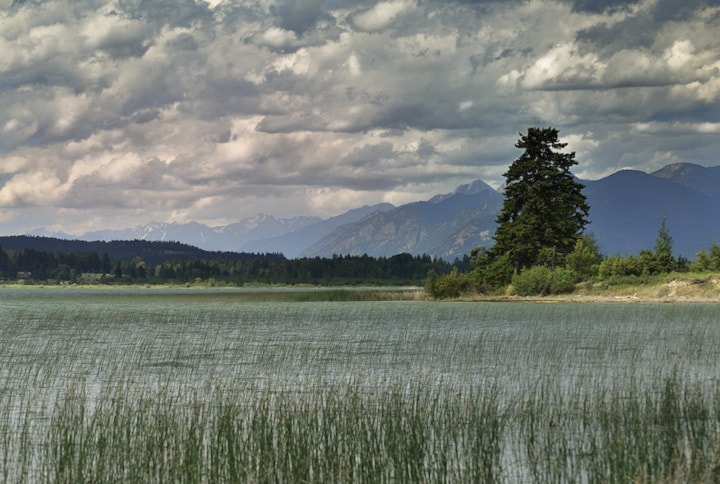A conservation fund in East Kootenay similar to one proposed for areas along Kootenay Lake has provided over $1.5 million for 43 projects since it was created in 2008.
Residents of Radium Hot Springs, Invermere, Canal Flats and two rural areas of the Columbia Valley pay a $20 parcel tax annually, raising about $230,000 each year for environmental projects that aren’t already government responsibilities.
Dave Hillary of the Kootenay Conservation Program, which administers the fund on behalf of the regional district, told the Star it was a first for Canada, although such funds exist in the United States.
It was established following a referendum that passed with 54 per cent support — a margin Hillary says probably reflected the global financial crisis. “It was one of the worst times to bring something like that forward. But even with that happening, people were supportive because it was going not into general revenue but a dedicated, restricted fund for conservation purposes.”
Each year, anywhere from 15 to 30 groups respond to a call for proposals. Hillary assesses them to ensure they meet the basic criteria. Although any non-profit organization or individual or organization who partners with a non-profit can apply, a number of activities are ineligible, including fish farming, wildlife feeding, and lobbying or advocacy.
Next, a five-member review committee goes through the approved applicants and evaluates the technical merits of each project. Their recommendations go to the regional district board, which has the final say, although the board has never disagreed with the committee.
Hillary says as a guiding principle, they don’t worry about geographic equity: one area might get more funding one year, but things may balance out the next. Over five years, all areas have benefited from the fund. However, Hillary says in the first year, the quality of the applications wasn’t up to snuff, so they held back about 40 per cent of the money.
Because the fund is always oversubscribed, some projects are funded in full, others in part, and others denied with an explanation of where they fell short.
Both single and multi-year projects are eligible. “We don’t want to fund research for the sake of research, but if there’s a research component in year one that’s leaning toward a shovel in the dirt project in year two or three, we appreciate that,” Hillary says. “We’re looking at meaningful conservation outcomes. We know a lot of times science and biology can’t do things in one year.”
Fund leveraged $5 million
If voters in Areas A (East Shore), D (Rural Kaslo), and E (Rural Nelson) collectively approve a $15 parcel tax in November’s referendum, the fund would be less half the size of East Kootenay’s, at $106,500 per year. It would serve a larger area but a smaller population. (Kaslo was originally expected to take part in the referendum as well, but withdrew.)
It would also take a while for the money to begin flowing: the fund would first have to accumulate and pay off the referendum before a first call for proposals in the fall of 2015. A new committee would be struck to evaluate the proposals late that year, followed by a board decision in early 2016, with money disbursed in time for field work that summer.
That West Kootenay’s first conservation fund would target Kootenay Lake is no accident, Hillary says. Market research found that area had both the strongest support and least opposition to the idea. “We could have gone to other areas, but wanted to pilot the case for support around Kootenay Lake. It seemed like the natural place to start.”
He’s hopeful other areas may join later, but “because it’s such a new and novel idea in the Canadian landscape, I think you have to give people a chance to warm up to it.”
Hillary also says the East Kootenay fund has leveraged another $5 million in investment from other sources, pointing to one “politically sensitive” project on the east shore of Columbia Lake, now managed by the Nature Conservancy of Canada.
It received the largest single grant from the conservation fund: $700,000 toward the purchase of 127 hectares. Afterward, the Columbia Basin Trust and Teck Resources also put up large sums to protect the land from development. “It started out as a glimmer of an idea and a bit of seed funding that leveraged all the other funding,” Hillary says. “That was a real success story.”
East Kootenay regional district chair Rob Gay notes the conservation fund has a 10-year time limit and voters will be asked if they want to continue the fund beyond that. (The Kootenay Lake fund would be for the same term.)
Gay said leading up to the 2008 referendum, the strongest opposition came from the Fairmont/Windermere area, which has a high proportion of non-resident property owners. However, conservation groups and “community champions” convinced enough voters to say yes.
Since the fund was established, he said he hasn’t heard anything else negative about it. “Some projects may not have been as successful as hoped, but that’s the way things go.” He admits some people think government should take full responsibility for conservation “but folks in the Columbia Valley feel species-at-risk could use another set of eyes.”
Projects funded this year range from $3,000 for water quality monitoring on Lake Windermere to $30,000 to re-establish the northern leopard frog in the Columbia Marshes.
(CORRECTION: An earlier version of this story said that the Village of Kaslo would participate in the referendum, but they have opted out.)
